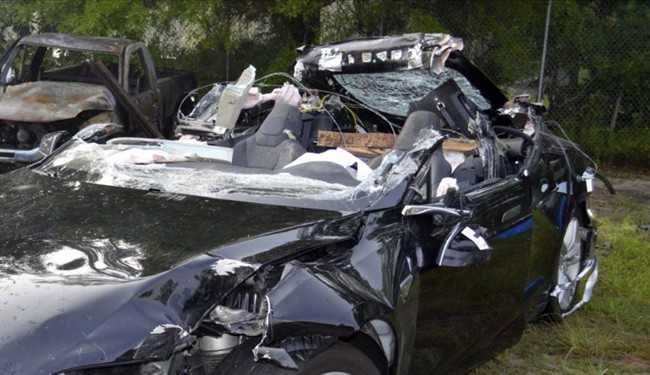DETROIT – Tesla engineers told members of a Senate committee they are looking into the role cameras and radar played in the fatal crash of a Model S using self-driving mode, according to a person familiar with the meeting.

The engineers have two main theories, this person said. Either the car’s cameras and radar failed to spot a crossing tractor-trailer. Or the cameras didn’t see the rig and the car’s computer thought the radar signal was false, possibly from an overpass or sign.
READ MORE: Tesla driver using Model S ‘autopilot’ function dies in crash
Tesla officials disclosed these theories to U.S. Senate Commerce Committee staff members in a briefing Thursday, said the person, who didn’t want to be identified because the meeting was private. The meeting came at the request of Committee Chairman Sen. John Thune, R-S.D., whose committee oversees transportation and could hold a hearing on self-driving technology after Congress returns to session in September.
The driver of the Model S, Joshua Brown of Canton, Ohio, was killed when the sedan hit the side of a tractor-trailer while travelling nine mph above the speed limit on a highway near Gainesville, Florida, federal accident investigators have said. The National Highway Traffic Safety Administration, which is investigating the May 7 crash, has said that the car’s Autopilot system was engaged.
Brown, 40, a tech company owner, was using the car’s automatic emergency braking and lane-keeping features at the time, a report from the National Transportation Safety Board said. Those features are part of the vehicle’s Autopilot system.

Get weekly money news
READ MORE: Tesla to limit autopilot capabilities to prevent drivers from ‘doing crazy things’
The Tesla struck the underside of the truck’s 53-foot semitrailer at a 90-degree angle, shearing off the sedan’s roof before it emerged on the other side of the trailer, according to the report. The truck was making a left turn at the time on a highway that allows cross traffic.
Tesla is still working to pinpoint what system failures caused the crash and still believes the safety benefits of semi-autonomous driving systems like Autopilot far outweigh any risks, the person said.
Representatives of the Palo Alto, California, company also told committee staffers that cross traffic remains a challenge for automated driving systems, according to the person.
A message was left Friday seeking comment from Tesla.
READ MORE: Consumer Reports urges Tesla to disable autopilot feature after deadly crash
In the briefing, Tesla officials told staffers that radar sensors connected to the automated braking system may have spotted the tractor-trailer, but the Model S computer may be designed to “tune out” overhead structures, such as bridges and highway signs, “to avoid the triggering of false braking events,” the person said.
In a Twitter message posted shortly after the crash, Tesla CEO Elon Musk raised the possibility that the radar signal had been tuned out. The message was later deleted. Tesla has said previously that Autopilot was unable to distinguish the white side of the truck from the brightly lit sky and there was no attempt to brake by either the self-driving system or Brown.
Musk has said the company will press ahead with semi-autonomous driving features, which he says will prevent injuries and accidents.
The company says it tells drivers that they must continue to pay attention while Autopilot is working and be ready to retake control of the vehicle.





Comments